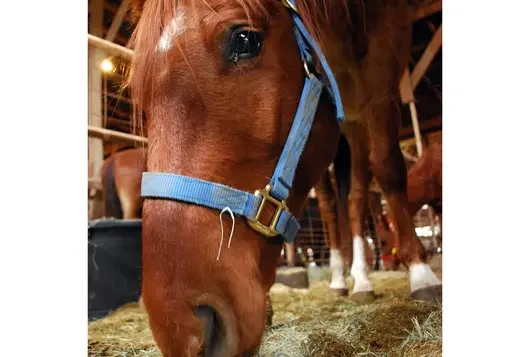Tips for Vets to Prevent Toxicity in Horses
Horses may have less of an opportunity to be exposed to household toxins than mischievous dogs and cats do, but that doesn’t make mitigating the risks of toxicity any less important for them. Here are our top tips to help you incorporate toxic exposure prevention into your own practice.
Evaluate Client Facilities Annually
- Walking pastures on a regular basis will help to ensure that toxic plants and safety hazards are found early. Toxic plant ingestion is more likely when forage is scarce in the early spring, midsummer and fall. Early spring and droughts are especially dangerous as there isn’t a lot of growth in pastures, which means horses don’t have many options for forage and are more likely to ingest something toxic.
- Pay attention to trees whose limbs overhang pastures. These limbs could fall during storms and lead to unexpected opportunity for toxic exposures.
- Ensure rodenticides are not in areas where horses can reach them. Most rodenticides are grain based and horses will readily eat them. The baits can also be moved by rodents, so take care to ensure they are far out of reach. If this isn’t possible, consider live traps, barn cats and other humane methods of rodent control.
Review Feed, Supplements and Medications
- Evaluate feed and supplements to ensure that the horse is not being over or under-supplemented with trace minerals and vitamins that may exist across a number of the products being fed.
- Review any supplements that your clients are using and evaluate their appropriateness for the horse’s lifestyle, underlying medical conditions, weight, age and reproductive status. You can also discuss their use per the labeled directions and confirm that they won’t interact with any medications the horse is receiving.
- Talk to your clients about safe practices for medicating horses. While sharing medications between horses is common, educate your clients on why it’s important to only use prescription medication on the specific horse and condition for which it was prescribed. It’s also important to only feed these medications in areas where other horses cannot access them.
- Ensure that medications and supplements are safely stored in places that horses can’t reach them. Common calls to the ASPCA Poison Control Center include those from owners whose horses have escaped their stalls or paddocks and ingested several pounds of supplements.
- Make sure that all products being fed are specifically formulated for horses. If horses are sharing common feeding areas with cattle, ensure that none of those cattle feeds contain ionophores. Even a single feeding can be deadly to horses.
Take Proactive Steps to Prevent Medication Errors
- Double-check every dosage, strength and name on the label prior to drawing up any medications. Be especially cautious of medications with similar-sounding names or those that are in similar packaging.
- Label all syringes as the medication is drawn up.
- Double-check each syringe and confirm the medication name, concentration amount and route of administration prior to administrating the medication.
- Use leading zeros whenever appropriate and avoid using trailing zeros, especially when handwriting prescriptions or medication orders.
- 0.5 mg is clearer than .5 mg, which may be misread as 5 mg.
- 5 mg is clearer than 5.0 mg, which may be misread as 50 mg.
We have lots more on this subject:
Type:
Tips

